Our Sun isn’t just a hot plasma ball. It’s an enormous natural fusion reactor emitting deadly radiation into space! But life has developed on our planet only because of our home star. It gives us warmth and energy, and our Solar System is the cradle of humankind. However, someday way down the road Sun will turn into a red giant and incinerate all inner planets into ashes.
Top facts about the Sun
- The Sun is not really yellow but white. It appears yellow to observers at the surface of the Earth because its rays are refracted as they pass through the atmosphere. If you would be lucky enough to become an astronaut, you will see that all the stars, including our own Sun, look white from space.
- The average density of the Sun is only 1.4 times that of water.
- Our home star is one of the brightest in the surrounding area. There are about 50 star systems within a radius of 17 light-years, and the Sun is the fourth-brightest of all these stars.
- Its surface area is 11.918 times higher than the Earth’s surface area, and the volume of the Sun is more than the volume of our planet by 1.3 million times!
- If you were on the solar surface (although there’s no solid surface), you would find that the gravity there is almost 28 times greater than on Earth.
- The temperature of the solar surface is about 5500 °K, so even lightning on Earth can be hotter. But the corona of our star is heated to 1.5 million °K, and the core, according to scientists, can have a temp up to 15 million °K.
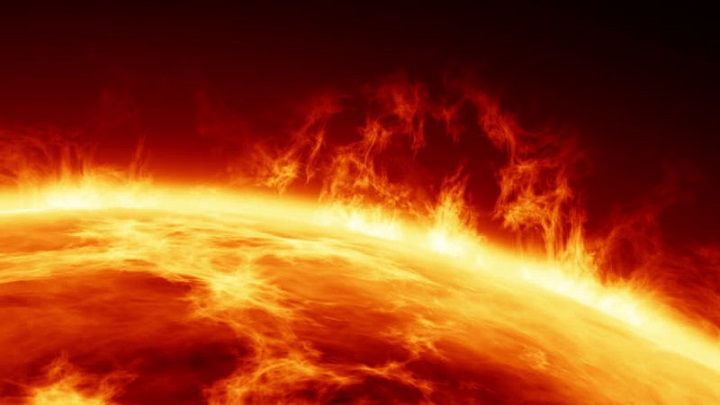
- Everyone knows about solar flares, which can cause failures in electronic systems and negatively affect the human body. There is a pattern here — the cycle of solar activity lasts 11 years, so solar flares can be predicted somehow at least.
- In 1859, a powerful solar flare caused massive failures in the operation of telegraphs on Earth. At that time, polar lights could be observed even in the subtropics, which is not possible under normal conditions.
- The amount of energy released during a single solar flare equals 150-160 billion tons in TNT equivalent. This amount of energy would be enough for the entire humanity for a billion years.
- There are spots on the surface of the Sun. These are areas with a lower surface temperature, only about 4000-4500 °K. Colder stars usually have larger sunspots.
- It takes 8 minutes for sunlight to reach Earth.
- Our star emits powerful radiation into space. We are protected from it by Earth’s atmosphere and magnetic field.
- Scientists have determined the age of the Sun – 4.6 billion years. It will live for about the same amount of time until it begins to turn into a red giant devouring its own planets.
- The speed of solar wind propagation in space exceeds 1.006.620 mph (450 km/sec).
- The Earth orbits the Sun once a year, but our star itself orbits the center of the Milky Way in 240 million years.
- The Sun burns about 4 million tons of matter converting it into energy every second. But it is so huge that these losses are almost imperceptible.
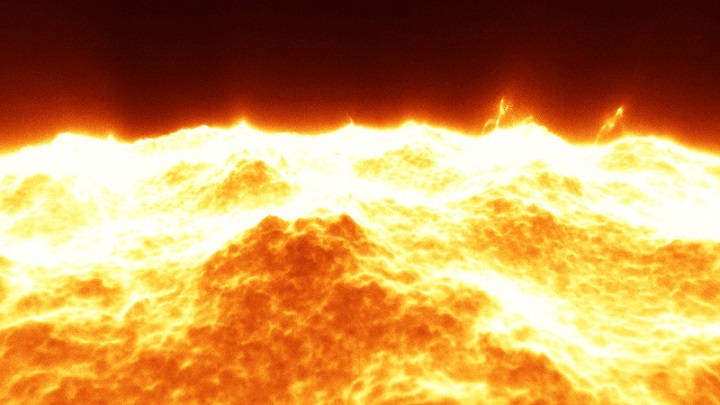
- After billions of years, our home star will burn out a significant proportion of hydrogen (which is about 92% of its volume) and will begin to burn it right in the shell. After this, the Sun will start turning into a red giant.
- It will never turn into a supernova, the solar mass is not enough for this. At the end of its life cycle, the Sun will turn into a white dwarf and cool down slowly till the end of time.
- It will be impossible to live on Earth in 1.1 billion years from now because the luminosity of the Sun will increase by 11% by this time. It will boil the oceans and burn the planet’s surface with deadly radiation.
- The Vatican officially admitted that our planet really orbits a star in 1992 only.
- There’s much more water on the Sun than on Earth. It exists there in the form of water vapor, trapped in one of the layers near the surface.
- Our star has its own magnetic field. It is about twice as powerful as Earth’s one.
- If mountains were possible on the Sun, their maximum height would not exceed a few millimeters due to the monstrous gravity.
- The Sun accounts for 99.84% of the total mass of the Solar System. Planets, asteroids, comets, and everything else together make up only 0.16%.
- The upper limit of the solar atmosphere extends beyond the orbits of Neptune and Pluto. Only a few spacecraft, Voyager 1 and Voyager 2 have gone beyond their limits in the entire history of space exploration.
- The layers of matter that make up the star rotate 30-35% slower at the Sun’s poles than at the equatorial regions.
- The Sun occasionally erupts prominences that are much larger than our own planet.
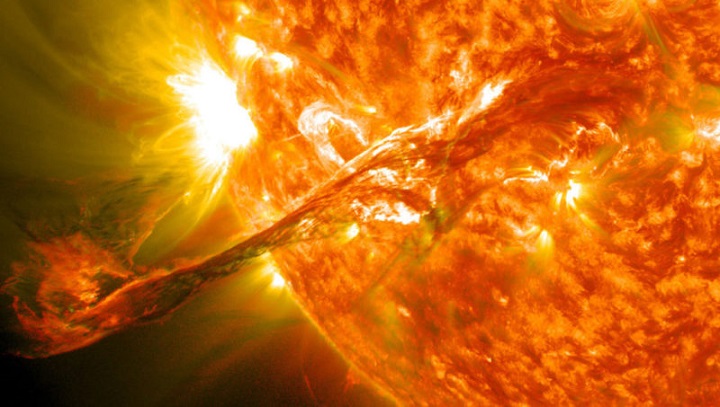
- Solar wind can be used as a driving force. Solar sails accelerating spacecraft using the pressure of stellar wind have been invented for a long time.
- The Sun was formed out of “recycled materials”. This is evidenced by its composition and the mineral composition of the Earth as well.
- Our home star will increase in diameter by about 256 times after becoming a red giant.
- The Earth is 3.1 million miles (5 million km) closer to the Sun at the closest point of the orbit than at the farthest one.
- According to science, the density of matter in the solar core is 150 times higher than the density of water. Although it is still negligible compared to the density of neutron stars and black holes.
- The Sun isn’t just a ball of plasma, as some people think. It consists of layers, just like the planets.
- It’s possible to observe the solar corona with the naked eye during a total solar eclipse only.
- The Sun’s luminosity isn’t constant. It fluctuates within 0.1%, but these changes take years, so they can only be recorded using special devices.
- Solar radiation includes a variety of ranges – radio waves, x-rays, etc, but most of it is visible light. It’s refracted as it passes through the Earth’s atmosphere, so the Sun appears yellow to us.
- Currently, scientists know 5 other stars that are almost identical to our Sun in all parameters. This is quite an encouraging fact, these stars might have potentially Earth-like exoplanets.
- The ancient Greek scientists considered the Sun, not a star, but one of the planets.
- The sources of solar energy remained unknown for a long time. Even in the middle of the XIX century, there was a theory that it warms up due to the bombardment of meteorites attracted by the powerful gravitation of the Sun.
- For obvious reasons, you can’t look at the Sun with a regular telescope. There’s a special scientific tool called a heliograph (solar telescope) for this purpose.
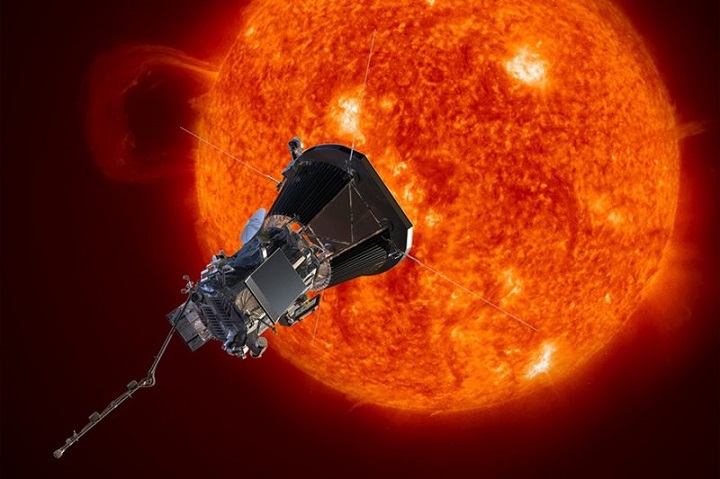
- There are trillions of stars 100+ times larger than the Sun in the observable part of the Universe.
- Sun generates energy through nuclear fusion. Hydrogen in the course of the reaction in the core turns into helium, which, by the way, got its name in honor of the ancient Greek god of the Sun.
- Moon is 394 times closer to Earth than the Sun. The flight to the Moon took the American astronauts about 3 days, and thus, at the same speed, it would take about 1182 days to fly to the star. In fact, any spacecraft will burn up much earlier, after approaching the Sun at a certain distance.
- The speed of our star in its orbit around the center of the Galaxy reaches 712.000 feet per second (217 km/sec). For comparison, the speed of the Earth in its orbit is about 98.400 feet per second (30 km/sec).
- Northern lights are caused by the solar wind colliding with the upper atmosphere of our planet.
- When the Sun turns into a red giant, it will stay in this phase for several tens or even hundreds of millions of years. Scientists believe that during this time primitive life may develop on Titan, a moon of Saturn, as it will temporarily fall into the habitable zone. It’s too cold there now though.
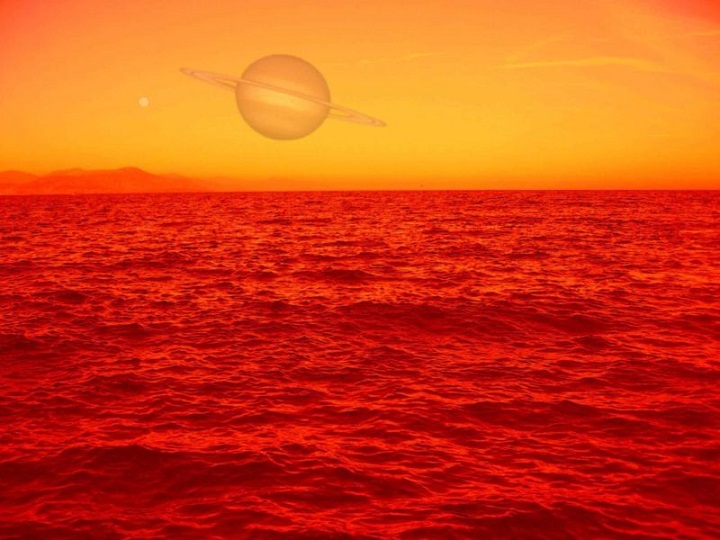
- The Sun seems to have different shades – yellow, orange, red – at different times of the day. It doesn’t actually change color, and the way we see it depends on atmospheric scattering.
- According to some theories, time can be distorted by the influence of monstrous gravity near such massive objects as stars. If this is true, time may flow differently near the Sun than it does away from It. But this is difficult to explain, and even more difficult to test in practice.
- Thousands of thermonuclear explosions happen on the Sun each second.
- About 15% of the stars in the Milky Way have a higher luminosity than the Sun.
- At the end of the XVII century, the Earth had abnormally low temperatures for several decades. This was due to the fact that the Sun has decreased its activity, and our planet has been receiving an insufficient amount of solar energy.
- If a single drop of solar matter had landed on Earth somehow, it would have destroyed everything within a radius of hundreds of miles, like a super-powerful mega bomb.
- If the Sun’s luminosity falls by just 1%, the Earth will have an ice age again.
- The ultraviolet spectrum of solar radiation has a disinfecting effect. It kills bacteria and fungi, including those that can parasitize humans.
- The Earth receives about 0.0000000002% of all the solar energy radiated into space by our home star.
- The earth’s albedo is about 37%, which means that 37% of the sunlight that hits our planet is reflected back.
- The Sun has no solid surface. Closer to the core it just gradually “thickens”, like gas planets.
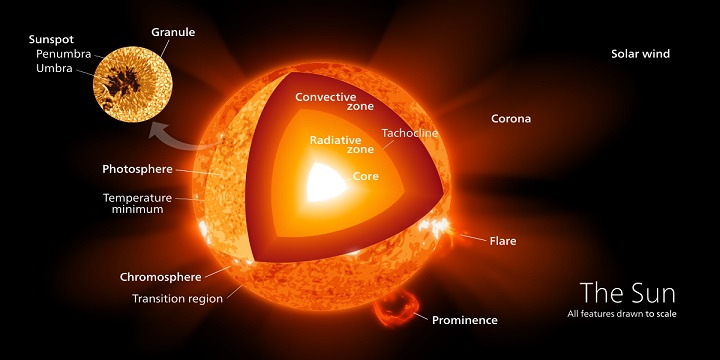
- The reactions that occur on it generate an incalculable number of neutrinos, tiny particles that are carried into space with the solar wind. As you read this sentence, millions of neutrinos pass through your body, but you don’t notice it because neutrinos almost don’t interact with any substance.
- To roughly imagine the brightness of the Sun, you can count it in light bulbs. If you take 100 Watt ones, you will need about 4 trillion of trillion of such bulbs.
- The composition of the Sun includes various metals, however, in negligible amounts compared to helium and hydrogen. The mass of gold dissolved in the solar matter is approximately equal to the mass of the dwarf planet Ceres.
- Lack of sunlight for a long period of time can cause stress and serious health problems. This is well known to residents of the circumpolar regions.
- The Sun has made about 20 orbits around the center of the Milky Way since its birth.
- Solar radiation can ” burn” any textile. This isn’t so noticeable on Earth, because we have an atmosphere protecting us, but on the Moon, there is no atmosphere, so the flag placed there by American astronauts has completely turned white.
- Sunlight brings a huge amount of energy to the Earth. Humanity would need only 0.01% of what our planet receives to meet all its needs.
- The Peruvian currency is called “sol”, which means “Sun” in Spanish.
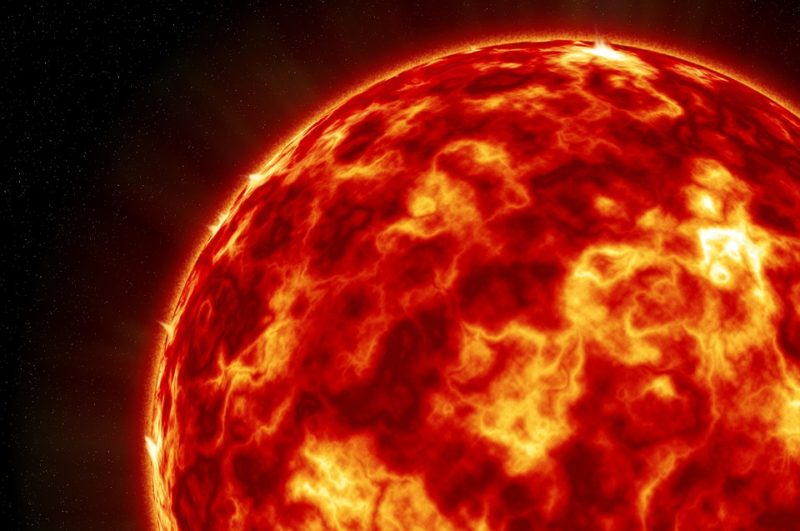
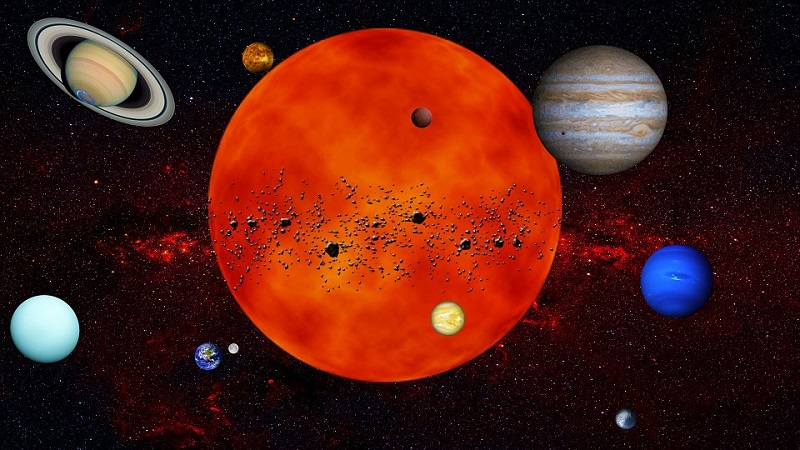
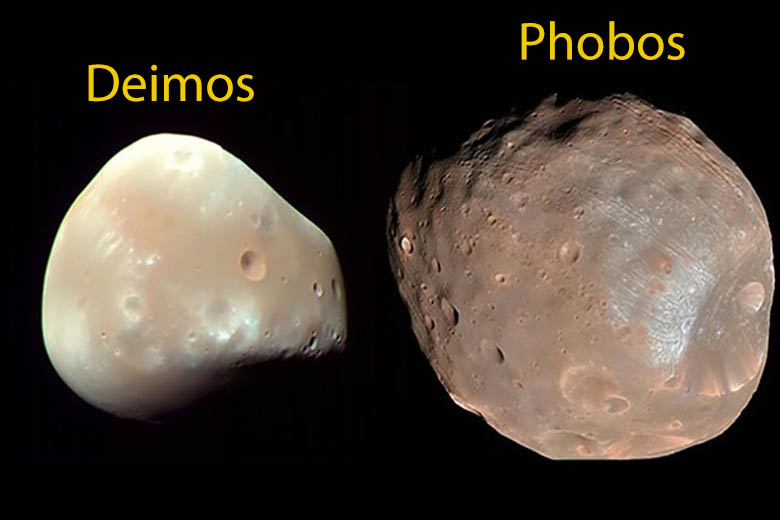

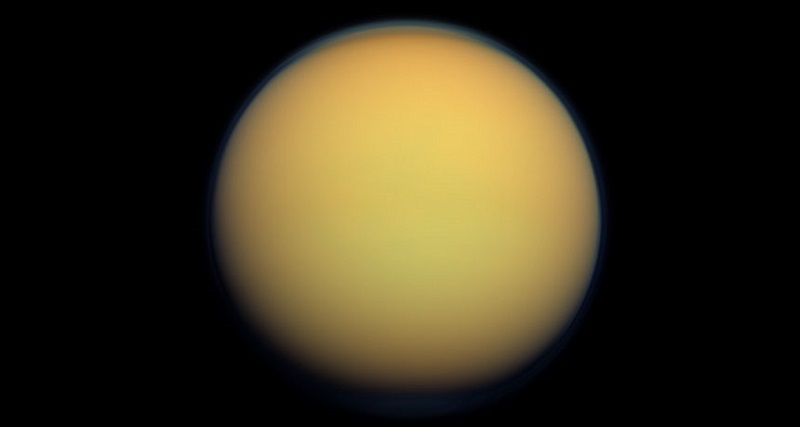
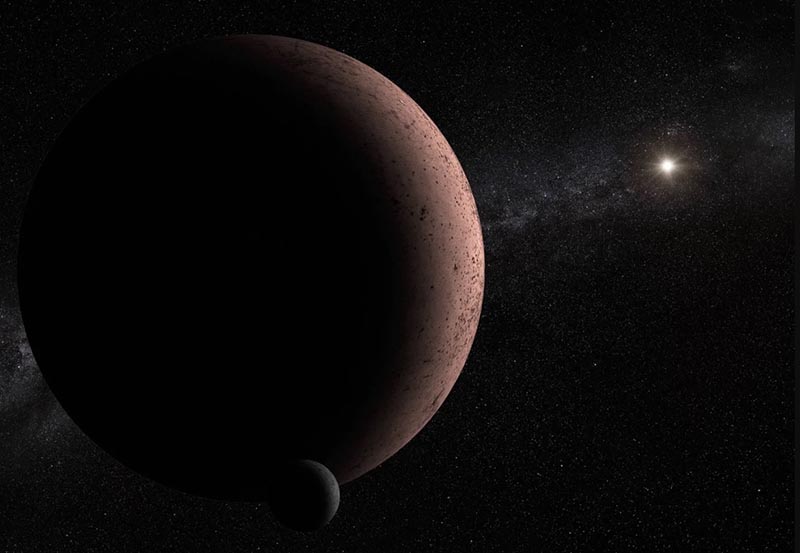
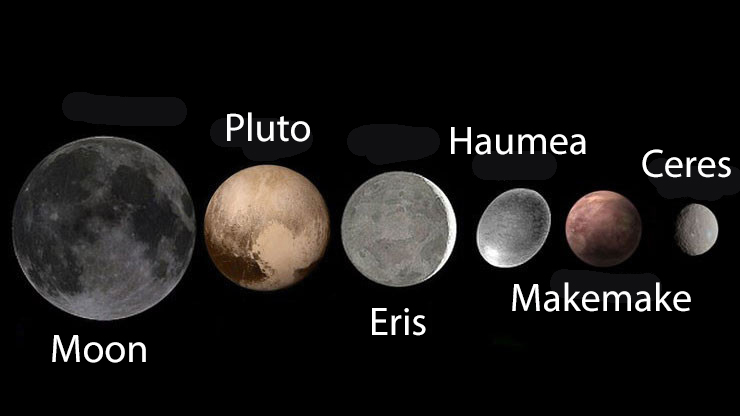
Pingback: 50 Interesting Facts About The Stars – Hurt Press